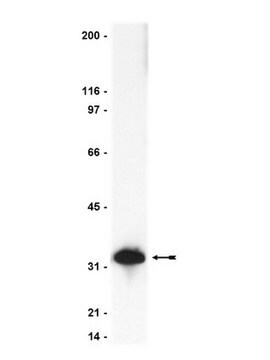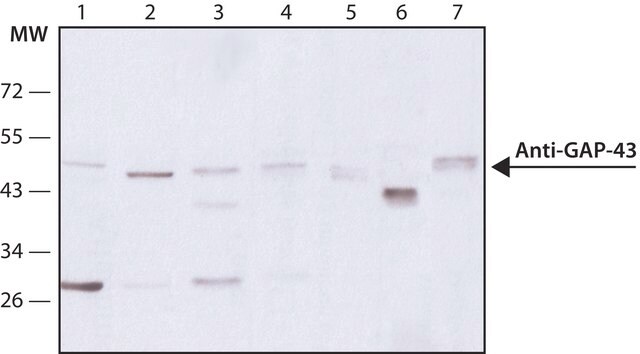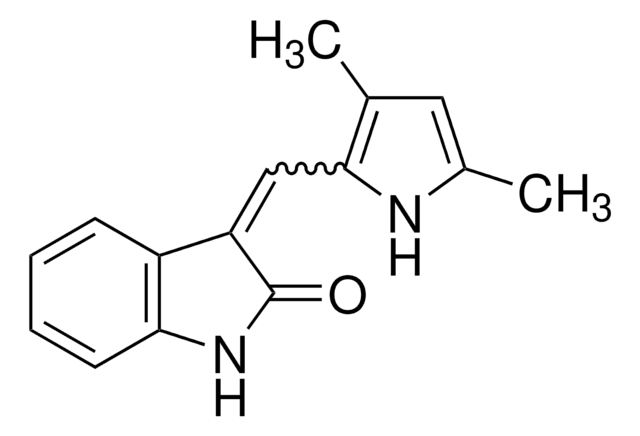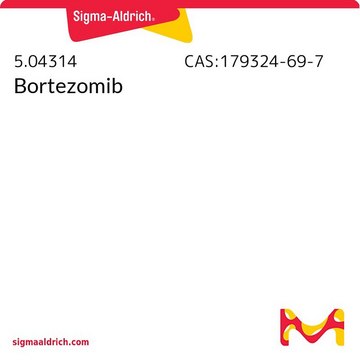SRP4251
MIP-2 from mouse
recombinant, expressed in E. coli, ≥98% (SDS-PAGE), ≥98% (HPLC)
Sinonimo/i:
CXCL2, Gro-β, Growth- regulated protein β, MIP2-α, Macrophage inflammatory protein 2-α, chemokine (C-X-C motif) ligand 2
Autenticatiper visualizzare i prezzi riservati alla tua organizzazione & contrattuali
About This Item
Prodotti consigliati
Origine biologica
mouse
Ricombinante
expressed in E. coli
Saggio
≥98% (HPLC)
≥98% (SDS-PAGE)
Stato
lyophilized
PM
~7.8 kDa
Confezionamento
pkg of 20 μg
Impurezze
endotoxin, tested
N° accesso NCBI
Condizioni di spedizione
wet ice
Temperatura di conservazione
−20°C
Informazioni sul gene
mouse ... Cxcl2(20310)
Descrizione generale
MIP-2 (microphage inflammatory protein-2), or Cxcl2 ((C-X-C motif) ligand 2), was initially recognized as a 6kDa protein released by an LPS (lipopolysaccharide)-stimulated mouse macrophage cell line. It belongs to the chemokine family which contains 6-14kDa, heparin-binding cytokines. It is a member of the a (CXC) chemokine family, where any amino acid separates both conserved cysteines.
Mouse MIP-2 is a 7.8kDa protein containing 73 amino acid residues including the ‘RLR′ motif common to the CXC chemokine family that bind to CXCR1 or CXCR2.
Mouse MIP-2 is a 7.8kDa protein containing 73 amino acid residues including the ‘RLR′ motif common to the CXC chemokine family that bind to CXCR1 or CXCR2.
Azioni biochim/fisiol
MIP-2 (microphage inflammatory protein-2), or Cxcl2 ((C-X-C motif) ligand 2), is a functional homolog of human IL-8 (interleukin) in mice, and like human IL-8 it induces a potent neutrophil chemotactic activity. It might be critical in the recruitment and influx of immune cells in inflammation and infection. Murine encephalomyelitis virus of Theiler (TMEV) induces the expression of MIP-2 in genetically susceptible but not in resistant mouse strains. In mice, in acute and chronic liver injury, TLR2 (Toll-like receptor)/S100A9/MIP-2 signaling pathways is crucial for neutrophil recruitment, and this might have therapeutic implications in selectively manipulating neutrophils in liver disease while circumventing normal wound healing and regenerative responses.
Stato fisico
Sterile filtered and then lyophilized without additives.
Ricostituzione
Centrifuge the vial prior to opening. Avoid freeze-thaw cycles.
Reconstitute in water to a concentration of 0.1-1 mg/mL. The solution can be diluted into other aqueous buffers.
Scegli una delle versioni più recenti:
Certificati d'analisi (COA)
Lot/Batch Number
Non trovi la versione di tuo interesse?
Se hai bisogno di una versione specifica, puoi cercare il certificato tramite il numero di lotto.
Possiedi già questo prodotto?
I documenti relativi ai prodotti acquistati recentemente sono disponibili nell’Archivio dei documenti.
Theiler's virus induces the MIP-2 chemokine (CXCL2) in astrocytes from genetically susceptible but not from resistant mouse strains.
Rubio N et al
Cellular Immunology, 239(1), 31-40 (2006)
A TLR2/S100A9/CXCL-2 signaling network is necessary for neutrophil recruitment in acute and chronic liver injury in the mouse.
Moles A et al
Journal of Hepatology, 60(4), 782-791 (2014)
Stéphanie Val et al.
JAMA otolaryngology-- head & neck surgery, 141(11), 997-1005 (2015-10-30)
Chronic otitis media with effusion is characterized by middle ear secretion of mucin glycoproteins, predominantly MUC5B; MUC5AC, the other secretory mucin studied frequently, has also been identified in the middle ear. Emerging evidence suggests a dichotomous role for these mucins
Hassan O J Morad et al.
Scientific reports, 12(1), 11078-11078 (2022-07-01)
Immune cell chemotaxis to the sites of pathogen invasion is critical for fighting infection, but in life-threatening conditions such as sepsis and Covid-19, excess activation of the innate immune system is thought to cause a damaging invasion of immune cells
Lingtao Luo et al.
American journal of physiology. Lung cellular and molecular physiology, 307(7), L586-L596 (2014-08-03)
Excessive neutrophil activation is a major component in septic lung injury. Neutrophil-derived DNA may form extracellular traps in response to bacterial invasions. The aim of the present study was to investigate the potential role of neutrophil extracellular traps (NETs) in
Il team dei nostri ricercatori vanta grande esperienza in tutte le aree della ricerca quali Life Science, scienza dei materiali, sintesi chimica, cromatografia, discipline analitiche, ecc..
Contatta l'Assistenza Tecnica.







